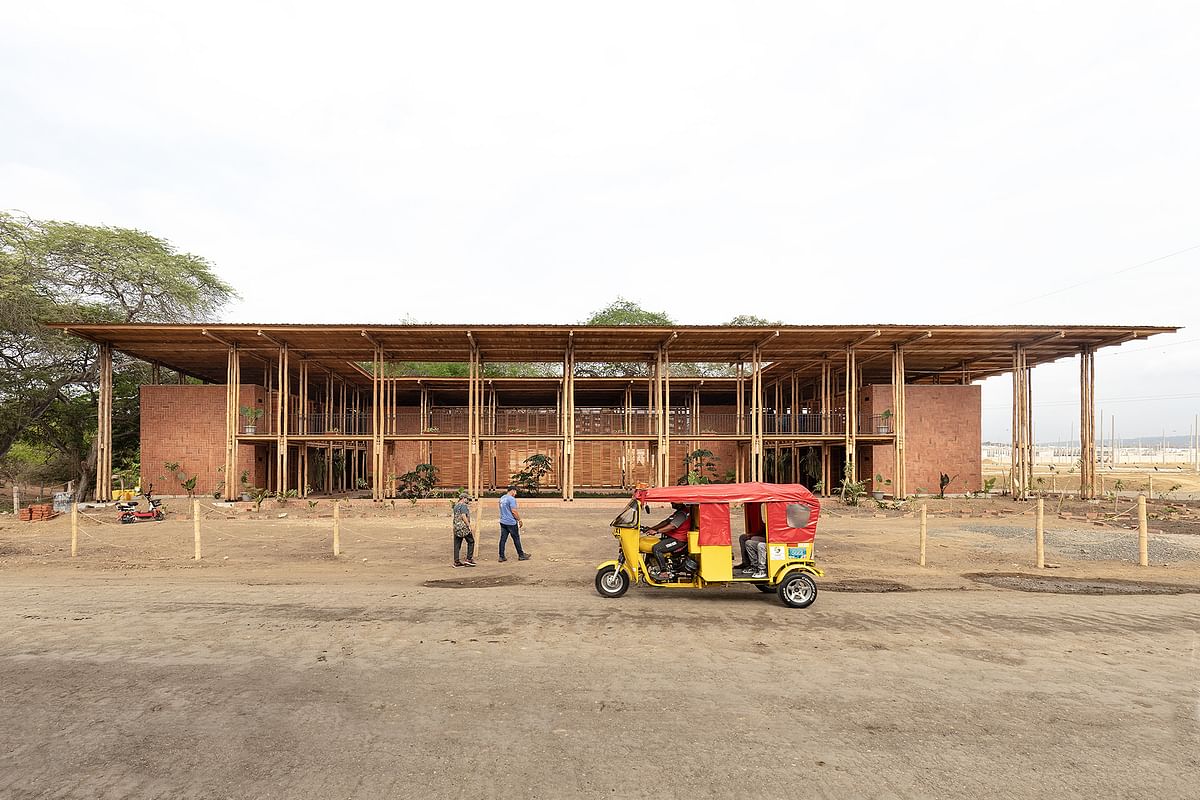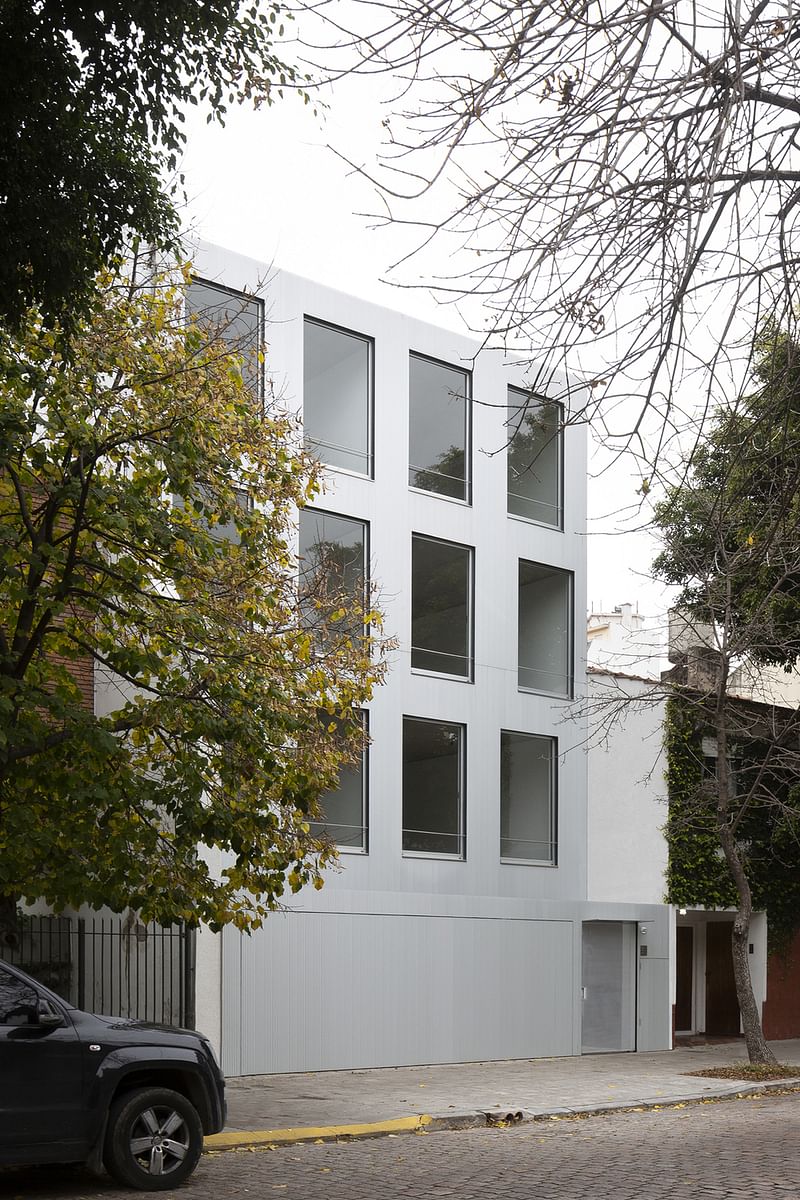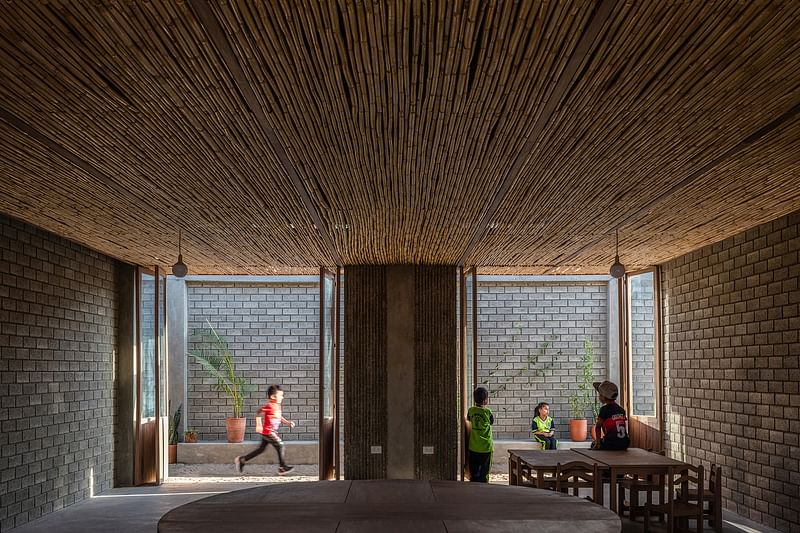Four Latin American practices go head-to-head as MCHAP.emerge finalists
By Josh Niland|
Thursday, Aug 15, 2024

Related
The Mies Crown Hall Americas Prize's latest MCHAP.emerge award program has selected four finalists ahead of next month's Conference on Critical Practice at the Illinois Institute of Technology. Each features a host of interesting design solutions while addressing the social needs of communities in Buenos Aires, Mexico City, and two rural villages in Peru and Ecuador.
"The finalists for the MCHAP Prize for Emerging Practice illustrate both a strong community-driven orientation and innovative architectural insertions into the everyday urban fabric of cities," noted jury chair and new Harvard GSD faculty member Maurice Cox. "They are characterized by an increased interest in the idea of architecture as a prototype, characterized by a keen sense in the economy of means through frugal yet expressive use of locally resourced materials and methods."
The announcement of the fifth prize cycle's finalists follows the recent selection of 53 Most Outstanding Projects winners and 219 Mies Crown Hall Americas Prize nominees. A winner will be announced at the culmination of the conference on Friday, September 27th.
The four finalists are:
(cover photo) Community Productivo Center Las Tejedoras by Natura Futura and Juan Carlos Bamba in Chongón, Guayas, EcuadorPrimary authors: José Fernando Gómez Marmolejo (Designer, Founder of Natura Futura), Juan Carlos Bamba (Designer, founder of Juan Carlos Bamba)
Author's description: "The project was seeking to be an integrative space for a big group of seawing womens that, until then, were not able to develop their productive activities in a proper space that could express their identity and desires in a sustainable way. This is how, patio with endemic vegetation is proposed as a meeting and exhibition place that is contained by two side naves and a central one; one contains theoretical training classrooms, cafeteria and hygienic services; the other, practical learning workshops, sleeping space, warehouses and a store to sell the products developed in the central nave where the artisan fabrics are made and sold. The main front is a production-exhibition gallery that acts as a filter for the patio and as an element to generate urbanity towards the street. Teak wood, traditionally used as a structure of the old stilt houses around the area, is used for the main structure. For the wall, local bricks were used, presenting a herringbone pattern which are stiffened by the very shape of the interlocked walls. For the natural illumination and ventilation wooden folding lattice doors are used to control them, working also as a link between the exterior and interior. This, focused on a low energetic consumption, having in mind the high humidity and temperatures in the area."
Housing Building on Virrey Avilés Street by Juan Campanini-Josefina Sposito in Buenos Aires, Argentina
Primary authors: Josefina Sposito (Project Design and Management), Juan Andrés Campanini (Project Design and
Management)

Author's description: "The project poses an attitude towards the city. It thinks about the urban form through every scale of its architecture — from the detail, to the facade, to the city — assuming the role of every building as a primary actor in the construction of the common. The apartment building on Virrey Avilés St. introduces the facade as an autonomous project within the general one. Building in the city implies being in touch with other projects, other constructions and architectures. Following this premise, the facade’s project carefully defines its limits and outlines to stand separate from its neighbors, while assuming its condition of being a fragment of the collective urban space. Made with pieces of anodized aluminum cladding, the facade creates an homogenous surface completed by twelve windows. A subtle displacement in the position of its openings refuses the reading of the front as a grid and enhances its superficial condition. Moreover, this behavior is emphasized when seen foreshortened and the cladding minimum thickness arises, performing as a falling veil that covers the building’s front and hides its interior organization. There are no proper hints of what is happening inside, just one unified and plain image towards the street."
Elementary School in Santa Cruz de Villacuri Community by Estudio Copla, Atelier Ander Bados in Santa Cruz de Villacuri, Salas, Ica, Peru
Primary authors: Betsaida Curto Reyes (Architect), Ander Bados Sesma (Architect)

Author's description: "We hoped to increase the value and enhance the ruggedness of the environment by blending textures and materials. The school could function within the context of its surroundings: earth, rocks, olive trees, wild cane, yucas, land. For this we felt was the soul of Villacuri. Our core beliefs were not only creating a space where the school traditions could flourish. But also, we hoped to embellish the sense of pride to an already strong community. Our plot, situated in the heart of the town and overshadowed by its neighbors, inspired us to design a space where classrooms would connect with open natural areas. Respecting the use of local materials, we devised a grid system filled with ‘full’ and ‘empty spaces.’ We implemented seven classrooms and service buildings (including a kitchen, staffrooms, and bathrooms). Punctuated throughout, dotted amongst the wild cane and olive trees, the children have access to shaded paths, classrooms protected from the scorching desert temperatures and an amphitheater which serves as a playground as well as a hub for the community. Further efforts were also employed to reduce classroom temperatures. We reinterpreted an old Iocal method, using a two-roof system that forms an air chamber, thus allowing natural air ventilation to flow throughout whilst restoring an environmental comfort. The ‘borrowed’ construction techniques used, along with the repurposing of local materials allowed us to reimagine what most deem ugly to become beautiful. And whilst the trees and shade protect the classrooms, the children can simply focus on learning."
PILARES Cuicuilco by TO, +UdeB Arquitectos, AGENdA agencia de arquitectura in Mexico City, Mexico
Primary authors: Carlos Enrique Facio Gaxiola (Co-Lead Designer), Jose Amozurrutia (Co-Lead Designer)

Author's description: "Our first concern was to ensure that the buildings managed water due to the periods of scarcity of this resource in Mexico City. Therefore, the first thing we considered that should be repeated in the three projects was an inverted roof to capture rainwater. The second consideration, understanding that we had to develop three projects, was to ensure that both the construction system and the public and urban spatial structure could be preserved despite contextual differences, which implied designing a logic and a system. We opted for slender modular steel structures, almost entirely resolved with a single square profile of 10cm per side, whose variations configure columns and beams with open flanges. We used certified laminated wood as complementary structural material, to highlight its environmental and architectural virtues as a renewable construction material in a public building. In these buildings, the structure is a form that defines and articulates the subtle boundary between interior and exterior space, aiming above all to be easily accessible by connecting with urban dynamics, as well as being an open and illuminated attraction throughout the day."

RELATED NEWS Mies Crown Hall Americas Prize names 53 Outstanding Project winners for 2024

RELATED NEWS A look at the Mies Crown Hall Americas Prize nominees for 2024


Share
0 Comments
Comment as :